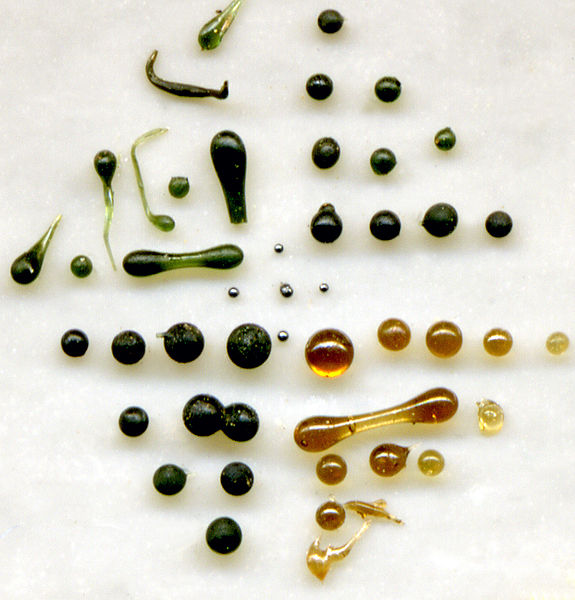12.5 Cosmogenous Sediments
Cosmogenous sediment is derived from extraterrestrial sources, and comes in two primary forms; microscopic spherules and larger meteor debris. Spherules are composed mostly of silica or iron and nickel, and are thought to be ejected as meteors burn up after entering the atmosphere. Meteor debris comes from collisions of meteorites with Earth. These high impact collisions eject particles into the atmosphere that eventually settle back down to Earth and contribute to the sediments. Like spherules, meteor debris is mostly silica or iron and nickel. One interesting form of debris from these collisions are tektites, which are small droplets of glass. They are likely composed of terrestrial silica that was ejected and melted during a meteorite impact, which then solidified as it cooled upon returning to the surface.

Cosmogenous sediment is fairly rare in the ocean and it does not usually accumulate in large deposits. However, it is constantly being added to through space dust that continuously rains down on Earth. About 90% of incoming cosmogenous debris is vaporized as it enters the atmosphere, but it is estimated that 5 to 300 tons of space dust land on the Earth’s surface each day!
sediment derived from extraterrestrial sources (12.5)
a microscopic piece of space dust (12.5)
solidified glass fragments ejected during meteorite impacts (12.5)

